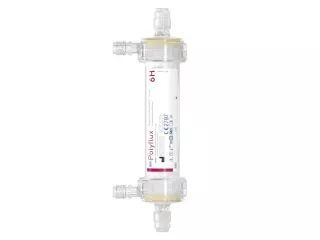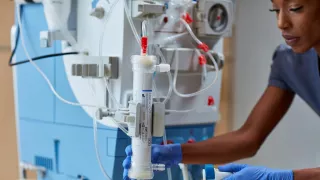
Polyflux 6H Dialyzer
Sterilized for biocompatibility
Polyflux 6H dialyzers are steam-sterilized inside-out to promote biocompatibility, avoiding exposure to chemicals such as ethylene oxide and manufacturing residues.4,5
Important Safety Information
INDICATION
Polyflux 6H is intended for chronic and acute applications in hemodialysis, hemodiafiltration, and hemofiltration on small patients including pediatric indications, considering blood flow, body weight and extracorporeal blood volume.
For single use only.
Rx Only. For safe and proper use of the products mentioned herein, please refer to the appropriate Operators Manual or Instructions for Use.
Vantive, AK 98, Polyflux, Revaclear and Theranova are trademarks of Vantive Health LLC or its affiliates.
References
-
Ronco C, Crepaldi C, Brendolan A, et al. Evolution of synthetic membranes for blood purification: the case of the Polyflux family. Nephrol Dial Transplant. 2003;18(Suppl 7):vii10-20.
-
Goldstein SL, Allsteadt A, Beck W, Nilsson L-G. Polyflux® 6H dialyzer: a new option for small children requiring dialysis. Int J Artif Organs. 2007;30:321-324.
-
Cochat P, et al. Pediatric Dialysis. Chapter 19. Maintenance hemodialysis during infancy. 2012. Kluwer Academic Publishers, Dordrecht, pp 35-46.
-
Polyflux 6H Instructions for Use, 2022.
-
D’Ambrosio FP, Savica V, Gangemi S, et al. Ethylene oxide allergy in dialysis patients. Nephrol Dial.1997;12:1461-1463.




